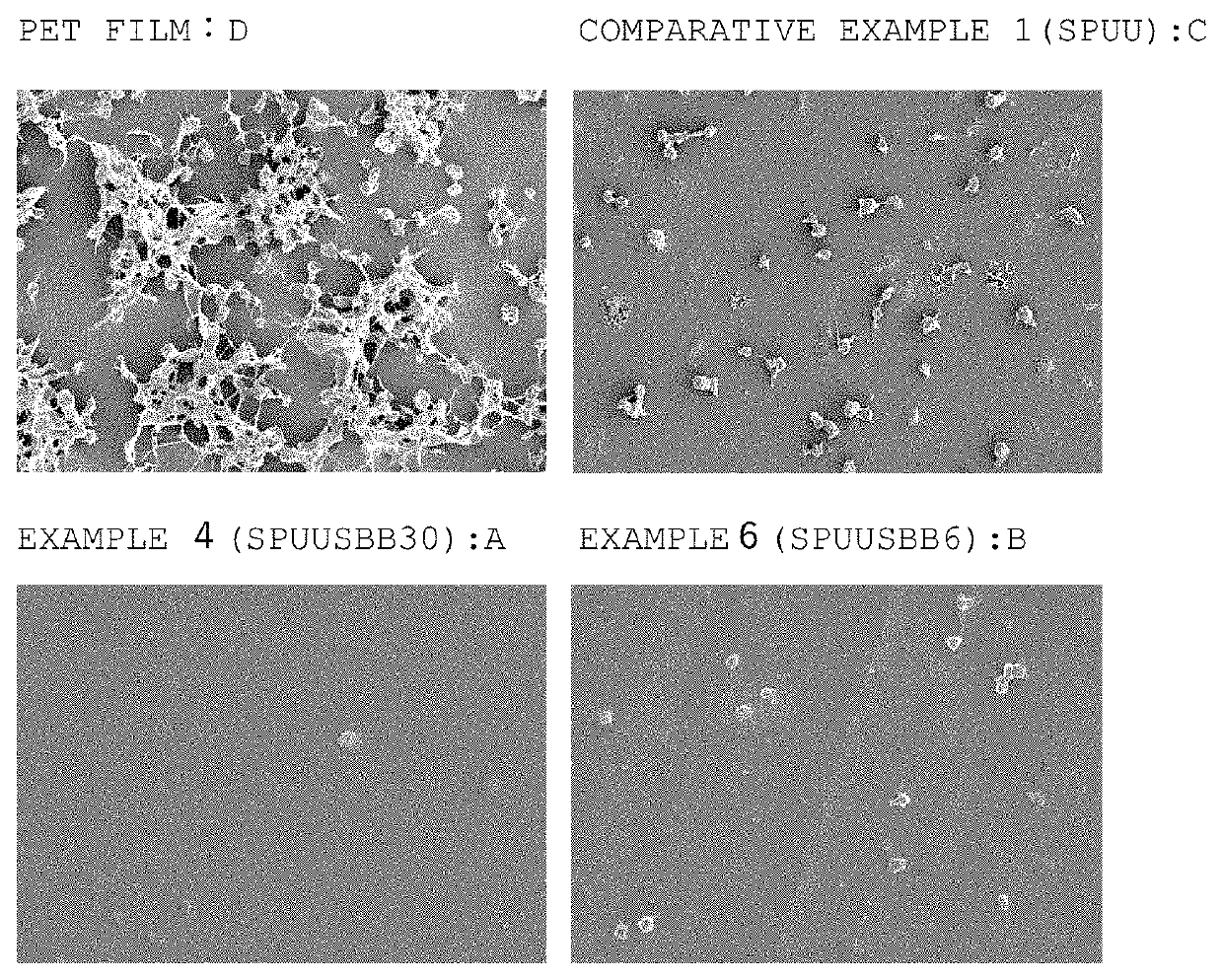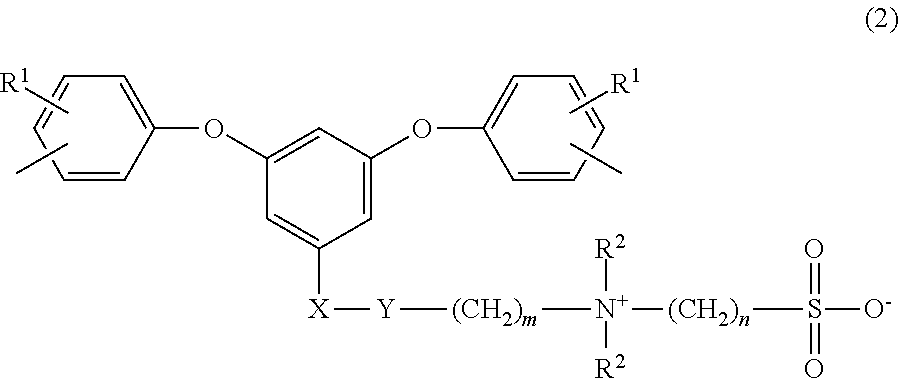Sulfobetaine group-comprising reactive compound, polymer thereof, and method of producing the polymer
a reactive compound and sulfobetaine technology, applied in the field of biocompatible polymers, can solve the problems of losing repulsive characteristics to proteins, unsuitable for medical materials, and likely to adhere to proteins, and achieves excellent heat resistance and mechanical strength, and sufficient biocompatibility. , the effect of reducing the risk of toxicity
- Summary
- Abstract
- Description
- Claims
- Application Information
AI Technical Summary
Benefits of technology
Problems solved by technology
Method used
Image
Examples
example 1
[0180]In a nitrogen atmosphere, polycarbonate diol (a number average molecular weight of 1,000) (3.3 g, 3.3 mmol) and dimethylsulfoxide (1 ml) were placed in a three-necked flask, then were heated to 70° C., and were dissolved. To the solution, a solution of 4,4′-diphenylmethane diisocyanate (1.6 g, 6.6 mmol) in dimethylsulfoxide (2 ml) was added dropwise at room temperature. After the completion of the dropwise addition, the mixture was reacted at 70° C. for 1 hour. After the completion of the reaction, a solution of the sulfobetaine group-containing diamine (d) (1.7 g, 3.3 mmol) in dimethylsulfoxide (10 ml) was added dropwise at room temperature. After the completion of the dropwise addition, the mixture was reacted at 70° C. for 24 hours. After the completion of the reaction, the reaction solution was poured into an excess amount of methanol, and the resulting precipitate was suction filtered. The obtained solid was vacuum dried at 40° C. to give 6.2 g of a segmented polyurethane...
example 2
[0181]The same procedure as in Example 1 was performed except that the polycarbonate diol in Example 1 was used in an amount of 4.66 g (4.66 mmol), and the sulfobetaine group-containing diamine (d) was used in an amount of 1.06 g (2.0 mmol), giving 6.5 g of a segmented polyurethaneurea containing a sulfobetaine group (SPUUSB30) as a brown solid (yield 88.8%).
example 3
[0182]The same procedure as in Example 1 was performed except that a sulfobetaine group-containing diamine synthesized by using butane sultone in place of propane sultone to be reacted with the compound (b) was used at the same monomer ratio as in Example 1, giving 2.48 g of a segmented polyurethaneurea containing a sulfobetaine group (SPUUSBB) as a brown solid (yield 86.1%).
PUM
| Property | Measurement | Unit |
|---|---|---|
| temperature | aaaaa | aaaaa |
| temperature | aaaaa | aaaaa |
| temperature | aaaaa | aaaaa |
Abstract
Description
Claims
Application Information
 Login to View More
Login to View More - R&D
- Intellectual Property
- Life Sciences
- Materials
- Tech Scout
- Unparalleled Data Quality
- Higher Quality Content
- 60% Fewer Hallucinations
Browse by: Latest US Patents, China's latest patents, Technical Efficacy Thesaurus, Application Domain, Technology Topic, Popular Technical Reports.
© 2025 PatSnap. All rights reserved.Legal|Privacy policy|Modern Slavery Act Transparency Statement|Sitemap|About US| Contact US: help@patsnap.com



